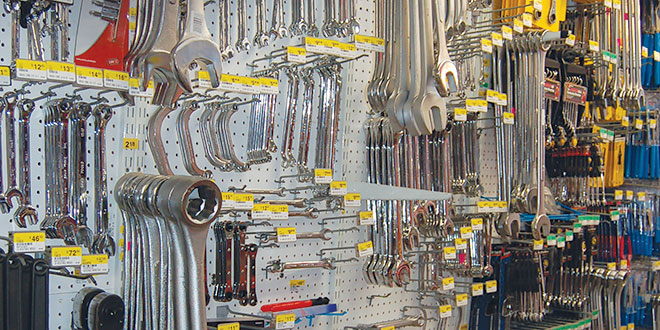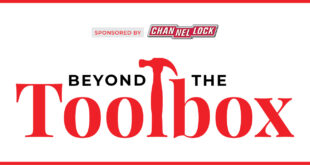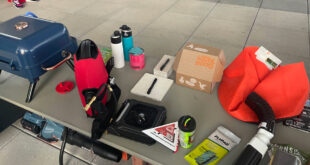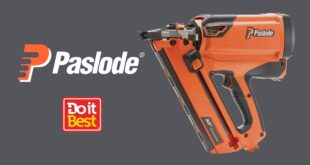Getting the most out of a purchase isn’t just a shopping strategy for consumers. Manufacturers are eager to offer accessories that can extend the applications of their products and boost sales while retailers are always looking to increase transaction sizes through impulse items or add-on sales.
Tool accessories fit neatly into this rationale, as accessories can greatly benefit all three groups. The accessories available for a consumer after they buy an expensive tool can determine which price point, brand and type of tool they choose. Manufacturers can extend the total amount of sales associated with a tool lineup. Retailers can use bundles and group deals to expand a tool department and gain larger average purchases.
Explore how accessories can be prime players in hand and power tool departments. Hardware Retailing spoke to Don Newman, manager of Hardware Sales in Bellingham, Washington, about how his contractor-oriented retail location and its other divisions approach tool accessories. The pro-focused business developed from a company selling dynamite to loggers and miners in the 1960s into a hardware powerhouse in the Pacific Northwest. Online sales are handled through distribution centers in Ferndale, Washington, and Indianapolis, extending the company throughout the country. Hardware Sales’ focus on heavy industrial customers and other professionals has allowed its team to gain a great understanding of the demand for tools and their accessories, in every shape and size.
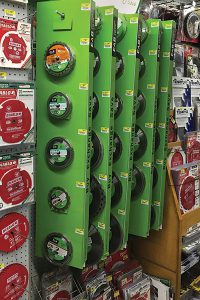
Wide, Wide World
Hardware Sales does roughly 70 percent of its business with contractors and industrial customers such as builders and refinery operators in the area. This clientele demands high-quality tools and accessories to go with them, which reflects what customers find when they come into the business’s retail location in Bellingham.
“We have a policy for carrying top-of-the-line items, and that extends to every accessory in the store,” Newman says. “This is reflected in our focus on professional customers, but our DIY customers and homeowners are also aware of that policy and reputation. They know they’re going to get a knowledgeable associate who isn’t selling them a lemon, even if they don’t recognize the brand name.”
One way Hardware Sales sets itself apart from other businesses, such as industrial warehouses and big-box stores that cater to industrial customers and professional tradespeople, is how it approaches depth and width of inventory. Given its focus on the best tools and accessories, it might be easy to assume Hardware Sales limits how wide it goes on brands and selections.
Newman says Hardware Sales has devoted significant energy to building its records of sales and customer buying habits to determine where to expand its A and B products. This is reflected in the number of brands stocked in the store on a regular basis, negating the need for special orders and delays, and in how the business approaches accessories such as blades for reciprocating saws or multitool attachments.
“For items that come in a wide variety of sizes, we’ll go as wide as we need to in order to make sure we can cover any customer’s needs. We don’t know what size they need, and sometimes they don’t either, so we need it all,” Newman says. “We still follow the 80-20 rule—80 percent of sales comes from 20 percent of your inventory—but that depth is where we separate ourselves from big boxes.”
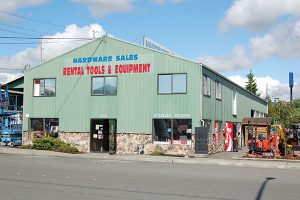
and professional tradespeople customer base with rental equipment and an industrial sales division.
While Hardware Sales will stock its inventory wide with accessory sizes for fast-moving A and B products, it also uses its past sales to go wide on C and D items, or slower-moving products. Big-box stores and retailers less invested in accessories don’t often have the depth of inventory to extend size availability beyond the top layer of product categories, Newman says, and it helps Hardware Sales find an edge.
“Accessories for C and D items, or sizes of fittings or blades for those less-in-demand items, are harder to find for the average consumer. Most retailers won’t stock those items because they fit products that aren’t in the ‘20 percent’ area where most sales are made,” Newman says. “We want to capture those sales, and more importantly, serve our customers by having those hard-to-find accessories.”
One of the ways Hardware Sales stays on top of its ratio for stocking such a wide assortment of accessories is its ordering system. After several years of buying history has built up, the sales staff has a solid idea of what is likely to be in demand during a given season. Distributors and manufacturers often provide their own buying sheets for a season based on their warehouse supplies. Hardware Sales buyers use these as a baseline example of what it might need to order, but amend everything based on their own collected data that is focused on 30-day buying cycles.
“We might know that a refinery is planning a turnaround (taking the facility offstream for repairs and renewal) or that major construction is starting up this month,” Newman says. “Combined with our sales data and our relationships with area businesses, we can stay informed our customers’ plans.”
Regarding Retail
Expanding selections for accessories, blades and fittings can help build a department’s reputation for having abundant options in accessories. Retailers need to look at fast-moving items and niche products. Hardware Sales also amends buying plans with its own 30-day projections based on past sales and the calendars of businesses it sells to. For more on how to manage your inventory and update your buying strategy, visit TheRedT.com/manage-inventory.
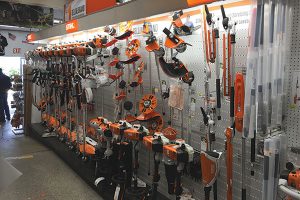
What a Deal
Stocking the right accessories for a particular customer base is crucial, but some decisions are based on other influences. In the case of hand and power tool accessories, these influences can often be the deals and packages offered by tool manufacturers.
Retailers who order the majority of their tools and accessories directly from wholesalers might not have as much experience with deal bundles as those who order direct from manufacturers, Newman says, but the diverse nature of Hardware Sales’ inventory means it orders through multiple distributors and directly from vendors.
“Manufacturers operate similarly to retailers—they have planned sales and programs for different times of the year when they want to promote certain items to their customers,” Newman says. “This can mean there are deals where a certain order amount comes with free accessories or deal bundles for tools and accompanying bits and drills.”
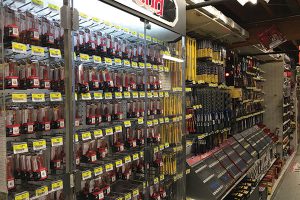
These deals often come in two types, with either the purchase of an accessory bringing the cost of a tool down, or accessories are added for free after a threshold purchase is made. The retailer can then use that discount to gain margin points or enhance deals and sales for customers.
One option is pairing the discounted accessory with a tool it complements, forming a package for the retailer to advertise. Another tactic for Hardware Sales is using the discounted price from the manufacturer to bring down the total price of the accessories, making them a more attractive option for customers.
Hardware Sales does most of its business directly with hand and power tool manufacturers due to its dedication to covering the length and breadth of the tool category. Newman encourages retailers to look beyond products available through their main supply chain and see what products are available when any brand or manufacturer is an option.
One example Newman uses was the shift of one distributor away from a brand that had high customer loyalty at his business. Instead of bringing in a similar brand of accessories now offered through that distributor, Hardware Sales expanded to a different distribution channel to retain the brand customers were familiar with while still working in items from the new brand. This expanded the store’s diversity, retained a brand customers wanted and allowed for business to expand with the new items.
Hardware Sale works with a wide variety of manufacturers, whether through a distributor or through direct sales. These include manufacturers of saw blades that include blade exchange programs, specialty wood drills, outside power tools, hand multitools, specialty circular saw blades and specialty hand tools for electrical work.
Regarding Retail
Retailers shouldn’t be afraid to branch out from products offered through one distributor, Newman says. Working directly with a manufacturer that has products customers want can pay dividends in building a solid tool reputation and diversifying a store’s selection. These direct contacts can also expose a retailer to new deals available through tool manufacturers, allowing for strong merchandising options.
Options for using distributor or manufacturer deals on accessories include:
- Bundling tools with discounted accessories to encourage larger purchase sizes.
- Packaging discounted accessories together at a lower overall price to encourage customers to try new brands.
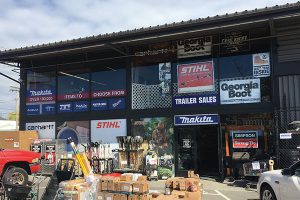
Sample Size
Hardware Sales’ familiarity with its customer base and their schedules helps the business in its ordering and product selection. That relationship goes even further for hand and power tool accessories, particularly when it’s time to bring in a new product or brand.
“We’re very familiar with our repeat customers’ buying habits. Who likes this brand of drill and why that contractor uses a certain saw from one company, but likes blades from another,” Newman says. “If we see an opportunity to expand a product line, or maybe add a third manufacturer where previously we had just two in a category, we don’t want to go in blind.”
Newman uses the example of shifting brands through distributors for how Hardware Sales approaches such a change. While the business kept its longtime brand in stock, it slowly brought in the replacement brand from the original distributor. To get feedback on how it performed on the tough job sites of its customers, Hardware Sales put these new accessories in the hands of outside sales reps and its salesfloor staff.
“We get samples along with bringing in a new brand little by little. We don’t want to muscle out the brands we already have, but we also want to learn if the new brand can find its own segment of customers,” Newman says. “We know someone is very loyal to one brand, so they get a sample from a competitor. Often it doesn’t lead to the contractor changing their mind, but they give honest reviews of the new item when we see them next.”
These samples can also be used to promote niche items that work well as accessories or in bundles and won’t take up a whole category like saw blades or drill bits.
Finger sleeves with magnetic fingertips for picking up loose fasteners and inflatable window shims with multiple uses are examples of items Hardware Sales has used as samples when they were first brought into the store but soon found a foothold.
“We’re always searching, from trade magazines to multiple buying shows. Accessories encompasses such a broad spectrum of products, there’s always something that can surprise you,” Newman says. “Then it becomes our job to surprise our customers with what we’ve found.”
Getting Attached to Accessories
Need some inspiration for your own accessory expansion plans? There are any number of items that can attract and intrigue customers while increasing your selection. Attachments that replace entire tool families or expand a product well beyond its assumed capabilities can draw a lot of potential sales.
 Ice Auger Drill Adapter
Ice Auger Drill Adapter
For anyone looking to do a bit of ice fishing, an ice auger is a familiar sight. Nothing else will suffice to get the clean hole down to the water. However, an adapter for a drill can span the gap between a hand auger and expensive motorized options. Not looking to sit on a frozen lake fishing? Similar adapters for smaller garden augers can make planting flowers or a vegetable garden simple and fast.
 Paint Roller Cleaner
Paint Roller Cleaner
A saturated paint roller can be a troublesome tool to clean, so there are plenty of options looking to make it easier. One option is a paint roll cleaner that attaches to the end of a power drill, has a long arm that holds the roller and spins while the roller is submerged in a large bucket. It speeds up the cleaning process while keeping the paint contained in the bucket for less mess.
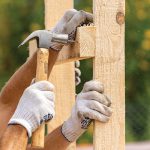 Extendable Hammer Assist
Extendable Hammer Assist
Power tools get a lot of the focus for accessories, but there are plenty of hand tool accessories. One is a hammer assist tool, which holds a nail on a magnetized rod, which the hammer then drives into a surface at the other end. Whether it’s driving a nail into a surface that doesn’t allow a hammer to fit or making better contact at a tricky angle, a hammer assist can make jobs easier.
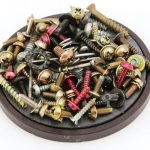 Magnetic Parts Holder
Magnetic Parts Holder
Magnetized accessories come in all shapes and sizes. Drill bits that keep a screw on the tip without an extra hand make jobs easier and faster. But how can you store or clean up the kinds of items that can easily drop and roll away? From magnetized wall strips to trays, there are options that can keep screws, nails, fasteners and bolts secure and within reach. There are also tools that switch the magnet on and off.
 Hardware Retailing The Industry's Source for Insights and Information
Hardware Retailing The Industry's Source for Insights and Information


